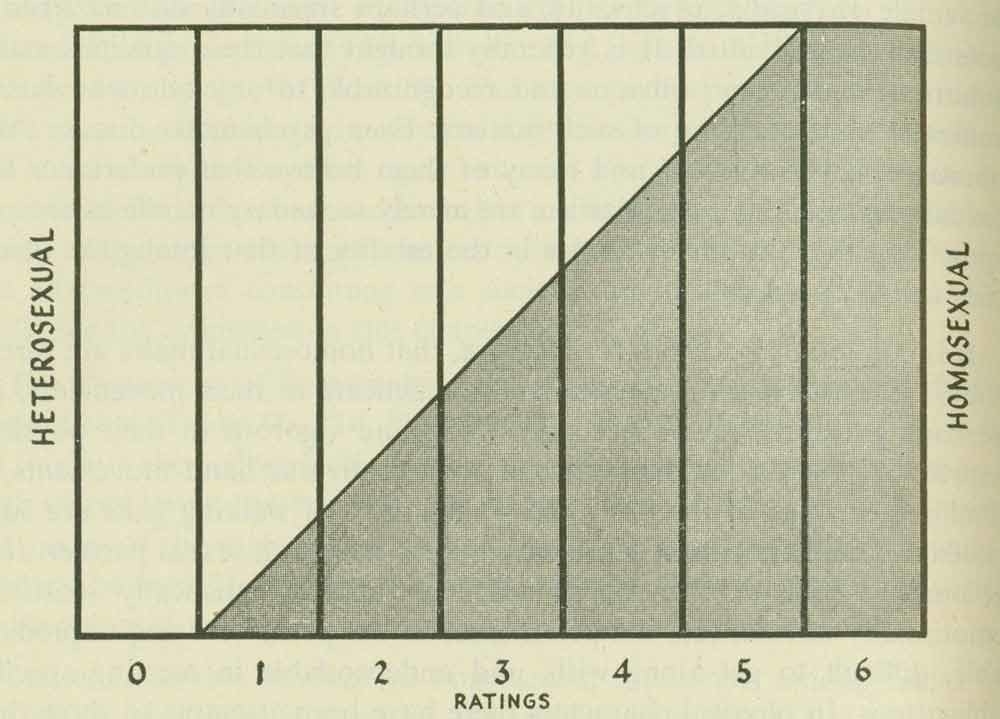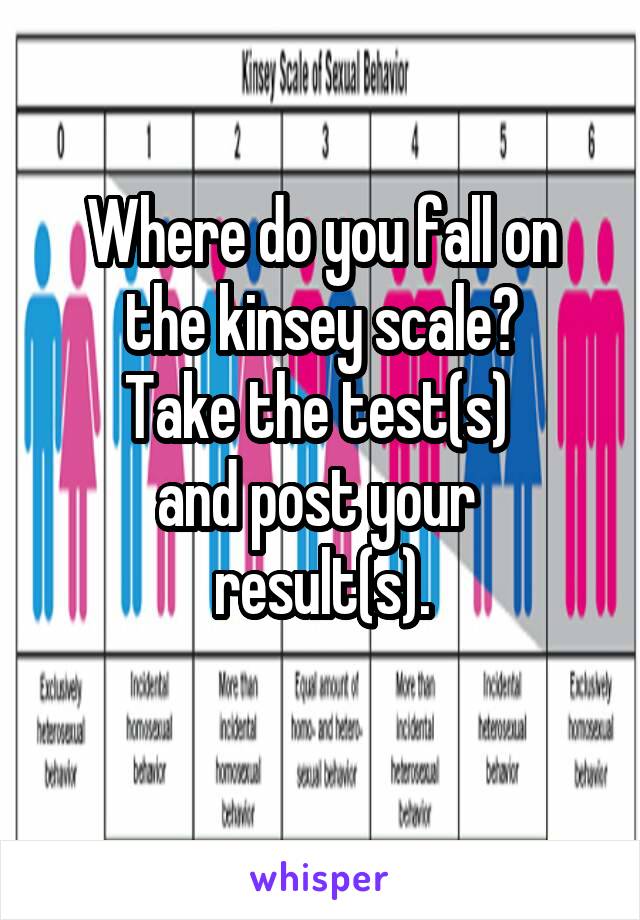
The Kinsey scale ranges from 0 for those interviewed who solely had desires for or sexual experiences with the opposite sex, to 6 for those who had exclusively same sex desires or experiences, and 1–5 for those who had varying levels of desire or experiences with both sexes, including "incidental" or "occasional" desire for sexual activity with the same sex. A seven-point scale comes nearer to showing the many gradations that actually exist.

While emphasizing the continuity of the gradations between exclusively heterosexual and exclusively homosexual histories, it has seemed desirable to develop some sort of classification which could be based on the relative amounts of heterosexual and homosexual experience or response in each history An individual may be assigned a position on this scale, for each period in his life. The living world is a continuum in each and every one of its aspects. It is a fundamental of taxonomy that nature rarely deals with discrete categories. The world is not to be divided into sheep and goats. Males do not represent two discrete populations, heterosexual and homosexual. Over 8,000 interviews were conducted throughout his research. Kinsey's first rating scale had thirty categories that represented thirty different case studies, but his final scale has only seven categories.

Instead of using sociocultural labels, Kinsey primarily used assessments of behavior in order to rate individuals on the scale. Instead, Kinsey believed that sexuality is fluid and subject to change over time. Alfred Kinsey, the creator of the Kinsey scale, is known as "the father of the sexual revolution." The Kinsey scale was created in order to demonstrate that sexuality does not fit into two strict categories: homosexual and heterosexual.


 0 kommentar(er)
0 kommentar(er)
